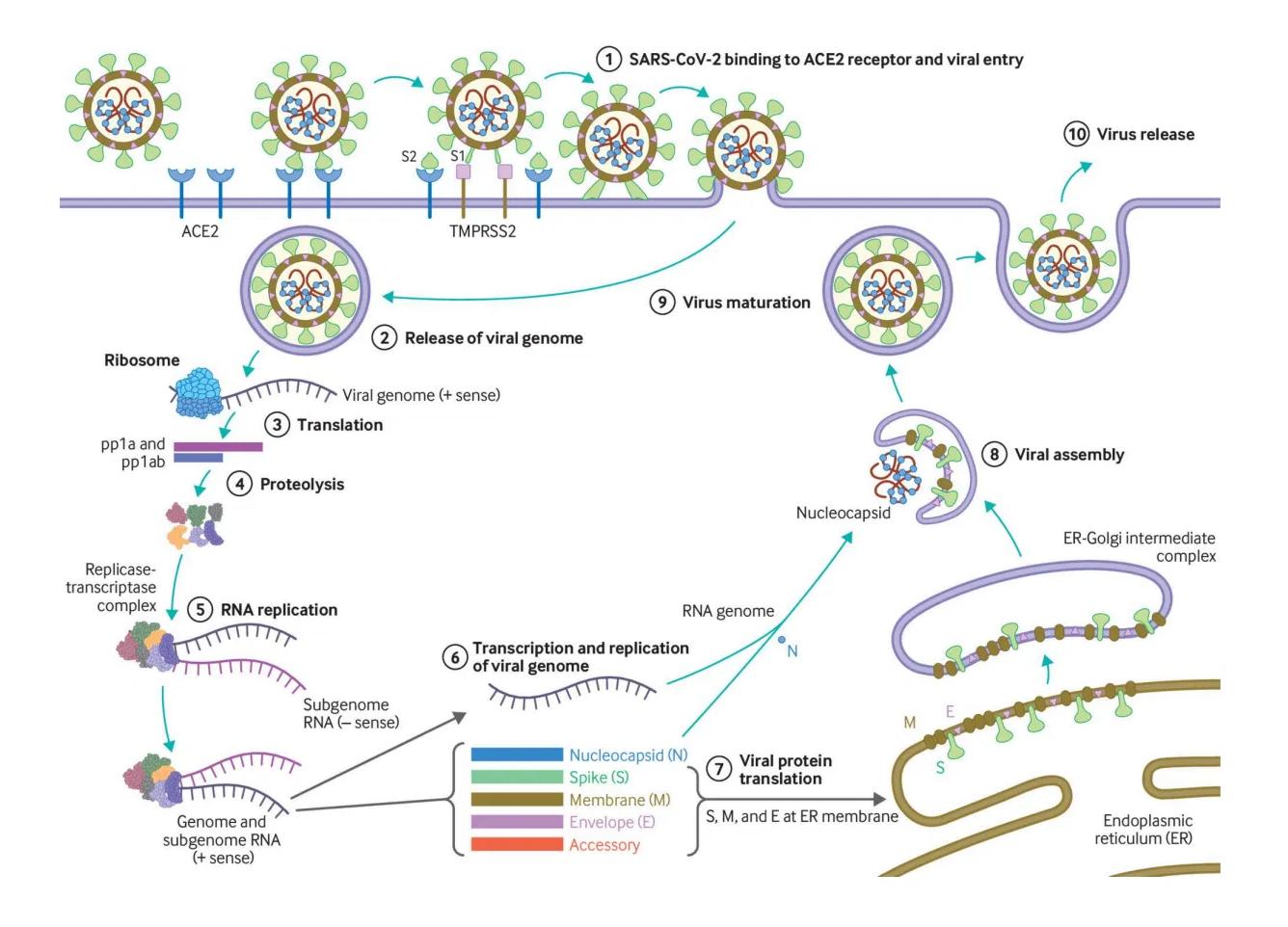Practice A2.3 Viruses (HL) with authentic IB Biology exam questions for both SL and HL students. This question bank mirrors Paper 1A, 1B, 2 structure, covering key topics like cell biology, genetics, and ecology. Get instant solutions, detailed explanations, and build exam confidence with questions in the style of IB examiners.
The graph shows the concentrations (log10 particles/ml) of E. coli host cells (blue line) and phage particles (red line) over time during bacteriophaqe lambda infection.

Based on the trends shown, which conclusion is most strongly supported?
Which feature distinguishes the influenza virus shown in the image from bacteriophage lambda?

The diagram shows the life cycle of a virus. Which step involves the virus entering the host cell?
The diagram shows a virus infecting an animal cell.What is the first step in viral infection?
Figure shows the life cycle of the SARS-CoV-2 virus inside a human cell. The virus binds to the ACE2 receptor and hijacks host ribosomes and organelles to replicate and assemble new virions.

Identify the two cellular structures used by the virus for protein synthesis and virion assembly as shown in steps 3 and 8.
Based on the figure, describe the role of the host ribosome in the viral life cycle after the viral genome is released.
Suggest why SARS-CoV-2, an RNA virus, needs to undergo both RNA replication and transcription. (Refer to steps 5 and 6)
Using your knowledge of the immune system, explain how helper T cells assist B cells in fighting SARS-CoV-2 infection.
Mutations in the spike protein gene can lead to immune evasion. Use the figure and your understanding of natural selection to explain how variants of SARS-CoV-2 may become dominant in a population.
Identify and explain the role of one enzyme involved in processing viral polyproteins after translation. (Refer to step 4 in the figure)
Based on the diagram, describe how viral envelope proteins (S, M, and E) are integrated into new virions during viral assembly.
The figure shows the SARS-CoV-2 virus, its interaction with human cells, and the host innate immune signaling cascade.
Panel a details structural features, panel b shows viral entry via spike protein interaction with ACE2, and panel c shows the downstream interferon immune response.

Based on panel a, identify three structural features of SARS-CoV-2 that are typical of viruses and explain why each is important.
Using panel b, describe the sequence of molecular interactions that allows SARS-CoV-2 to enter host cells.
Explain how panel c illustrates part of the innate immune defense, including the role of interferons.
SARS-CoV-2 is an RNA virus. Explain why RNA viruses, such as SARS-CoV-2, influenza, or HIV, often show very rapid evolution compared to DNA-based organisms.
Explain how reverse transcriptase allows retroviruses to replicate within a host cell.
What is the function of the viral RNA?
The following electron microscope image shows the structure of a virus:
Additionally, the table below compares key characteristics of viruses and living cells:
| Feature | Virus | Living Cell |
|---|---|---|
| DNA or RNA | Yes | Yes |
| Metabolism | No | Yes |
| Ability to Reproduce | Only inside host cell | Yes (independent cell division) |
| Ribosomes | No | Yes |
| Response to Antibiotics | No | Yes (for bacteria) |
Based on the image and data, explain why viruses are considered non-living organisms.
Describe one method by which viruses reproduce inside a host cell.
Focusing on the effects on the host cell and the timing of viral replication, compare and contrast the lytic and lysogenic life cycles of viruses.